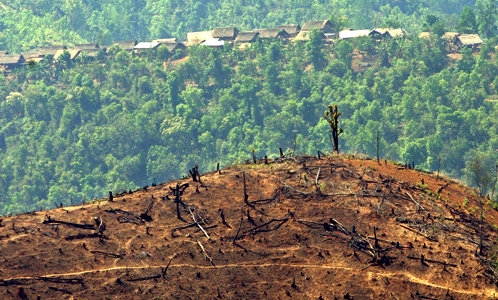
Wild animals are getting sicker and humans are to blame.
The World Organization for Animal Health has long been studying the human-animal health connection, publicly sparked in 2011 by a Global Conference on Wildlife held in collaboration with the World Health Organization. The relationship between increasing human activity and wildlife disease is inevitable, drastically affecting species around the globe. According to the National Wildlife Federation, the most threatening widespread illnesses currently affecting wildlife include white-nose syndrome, chronic wasting disease, whirling disease and sylvatic plague, many of which can be attributed to human activity.

Predominant factors contributing to this scary realization include habitat loss, introduction of invasive species, and environmental pollutants. The epidemic is largely due to increased global traffic and corresponding wildlife contact. Shipping and general transportation methods are improving at an exponential rate, allowing for the introduction of animals into areas far from their natural habitats. The interaction of previously isolated species escalates disease susceptibility as well as the establishment of vectors.

Climate change, resulting from human activity, is another factor responsible for the increase in wildlife disease. Warmer temperatures allow for the faster reproduction and longer life of bacteria-contingent illness. As a whole, unhealthy ecosystems fail to support healthy animals. A growing human footprint around the world is negatively affecting the health of our wildlife.
The most alarming part? As wildlife get sicker, humans get sicker too. The U.S. Center for Disease Control reports that 60 percent of all known human infectious diseases are related to contact with animals.
Video:




